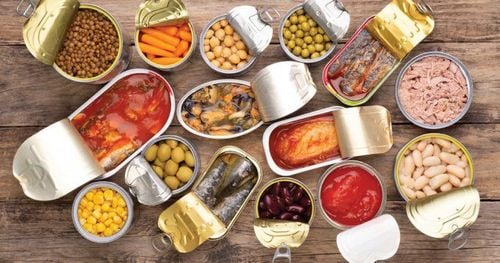Children today are showing an increasing trend of early puberty. One contributing factor to this phenomenon is changes in diet, which can affect children's hormonal balance. To help prevent early puberty, it is essential to ensure an appropriate nutritional plan for children experiencing or at risk of early puberty.
1. The situation of early puberty in children
An alarming trend is emerging that significantly impacts children's health. The prevalence of early puberty in children has increased dramatically between 1997 and 2010. Today, approximately 16% of girls start puberty at the age of 7 and about 30% by the age of 8. In Western countries, this decline in the age of puberty is linked to increased consumption of animal products and excessive calorie intake. Early puberty is often seen as a marker of premature aging. Under optimal nutritional conditions without caloric excess, healthy puberty may naturally occur around the ages of 15 to 18. However, in recent times, about 50% of girls begin developing breasts before the age of 10, and the average age of first menstruation has fallen below 12, with this trend continuing to decline.
A recent study from the University of North Carolina at Chapel Hill, published in the journal Pediatrics, reported: "By the age of 3, 3% of African-American girls and 1% of Caucasian girls showed signs of breast and/or pubic hair development. By the age of 7, the rates increased to 27.2% for African-American girls and 6.7% for Caucasian girls. At 8 years old, 48.3% of African-American girls and 14.7% of Caucasian girls had already begun development."
2. Food as a key factor influencing early puberty
Early puberty is not caused by a single factor. The nervous and endocrine systems, which regulate the onset of puberty, are highly complex. However, research has identified several environmental and lifestyle factors that may contribute to the declining age of puberty.
In both boys and girls, early puberty is often linked to a gradual shift from a plant-based diet to a diet rich in animal-based foods, high-fat content, and highly processed foods. Diets high in meat, dairy products, and processed plant-based foods have been associated with an earlier onset of menstruation, while vegetarian diets and vigorous physical activity are known to delay the onset of menstruation. The earlier and more intense hormonal activity contributes to an earlier onset of puberty.
2.1. Excess fat produces more estrogen
The rising rates of overweight and obesity significantly contribute to early sexual development. Numerous studies have confirmed the link between overweight children, early puberty, and dietary habits, especially in girls. A male hormone called androstenedione, produced in the adrenal glands and ovaries, is converted into estrogen in fat cells. Fat cells function like estrogen factories, producing this hormone in higher amounts as body weight increases. Excess body fat alters levels of hormones such as insulin, leptin, and estrogen, all of which are believed to accelerate puberty in children with obesity. Additionally, a sedentary lifestyle can lower melatonin levels, which may disrupt the brain's signals responsible for triggering puberty. Refined vegetable oils, which are quickly absorbed and stored as fat within minutes of consumption, contribute to weight gain, further affecting early maturation. Another factor linked to early puberty is the consumption of sugary drinks.

2.2. Animal protein increases hormone levels
Animal protein has been linked to the early onset of puberty, while plant-based protein has the opposite effect. The type of protein children consume, particularly during the critical preschool years (ages 5–6), appears to determine the timing of puberty onset. Children who consume large amounts of animal protein (e.g., meat, eggs, and dairy) during this period start puberty on average one year earlier than those who consume more plant-based protein. Conversely, children with higher plant-protein intake tend to experience a 7-month delay in puberty onset compared to average. For every additional gram of daily animal protein (the weight of a paperclip), there is a 17% increase in the risk of girls experiencing menstruation before the age of 12. Animal protein raises IGF-1 growth hormone levels, which are associated with early puberty. This finding was also observed in a study published in the American Journal of Epidemiology: Girls who consumed more animal protein and less plant protein between the ages of 3–5 experienced earlier menstruation.
Moreover, animal protein intake between the ages of 3–7 is linked to earlier menstruation, while higher plant-protein consumption between the ages of 5–6 correlates with later menstruation. Additionally, "the consumption of meat and dairy by children may reflect exposure to endocrine-disrupting chemicals (EDCs) that have accumulated in animal tissues."
In the livestock industry, anabolic steroid testosterone is used to increase muscle mass in cattle, which stimulates the production of sex hormones in both girls and boys. For example, American beef contains up to 600 times more estrogen than Japanese beef, contributing to the accumulation of estrogen in the body. In fact, "the levels of anabolic steroids in meat can be so high that studies have shown athletes consuming certain types of meat could be accused of steroid abuse."
2.3. 67% of estrogen in food comes from dairy
A significant proportion of retail milk comes from cows that are frequently impregnated to ensure consistent milk production. Due to genetic manipulation and specific feeding practices, the dairy industry forces cows to produce milk throughout their pregnancies. Dairy products account for approximately 60–70% of the estrogen obtained from food sources. This estrogen originates from modern agricultural practices where dairy cows are milked continuously during pregnancy. As pregnancy progresses, the estrogen concentration in milk increases significantly, ranging from 15 pg/mL to 1,000 pg/mL. Pregnancy leads to high circulating estrogen levels in cows, which become part of the milk consumed by children. Studies funded by the dairy industry reveal a 10% increase in IGF-1 levels (a powerful growth hormone) in adolescent girls consuming one liter of milk daily. Hormones are also added to livestock feed to stimulate animal growth. This is why commercial cow's milk contains high levels of estrogen and progesterone. The levels of sex steroid hormones in children triple within an hour of drinking cow's milk.
A study highlighted by Dr. Greger states, “Consumption of cow’s milk [in humans] interferes with the sensitive endocrine regulatory network from the fetal period through old age.” During puberty, when there is a physiological surge in growth hormone secretion, serum IGF-1 levels naturally rise and are further amplified by milk consumption.
Cow’s milk contains both natural and artificial hormones that increase human hormone levels. About a dozen detectable steroid hormones are present in milk, with the highest concentration in skimmed milk, followed by low-fat milk. Many consumers opt for organic dairy products to avoid added steroid hormones and genetically engineered growth hormone (rBGH). While this helps reduce exposure to these additives, organic milk still contains up to 59 naturally occurring hormones. These include: 8 pituitary hormones, 7 hypothalamic hormones, 7 steroid hormones, 6 thyroid hormones, 11 different growth factors.
2.4. High-fat foods contain more sex hormones
The type of bacteria in the gut can significantly influence estrogen levels. A high-fat, low-fiber diet promotes the growth of certain bacteria that convert bile acids into sex hormones. The intestinal wall then absorbs these hormones, depositing them into the bloodstream. The liver produces bile acids to aid in fat digestion. A diet high in fat results in more bile acids, which are then metabolized into sex hormones.
A high-fat diet also increases estrogen levels by recirculating estrogen back into the bloodstream. Once estrogen has circulated throughout the body, the liver removes it and excretes it into the intestines. To prevent the intestine from reabsorbing this hormone, the liver produces a compound that binds to the hormone, stopping its reabsorption. However, a high-fat and meat-rich diet promotes the growth of bacteria that release an enzyme breaking down this compound, freeing the hormones. These hormones are then reabsorbed back into the bloodstream, leading to elevated estrogen levels. For more information, click here to watch a video by Dr. Neal Barnard explaining how a plant-based diet helps eliminate excess estrogen from the bloodstream.

3. Nutritional guidelines for children with early puberty
Children are reaching puberty earlier than ever before. Below are some methods to mitigate exposure to harmful factors:
- Children's diets should emphasize whole plant-based foods rather than animal-based foods. This keeps protein intake within a safe range and reduces children's exposure to endocrine-disrupting chemicals (EDCs).
- Minimize dairy consumption - replace cow's milk with alternatives like almond milk or hemp milk.
- Engage children in exercise and participate with them to promote a healthy lifestyle.
- Minimize processed foods: These foods are calorie-dense, nutrient-poor, and contribute to obesity and other health problems.
- Incorporate a variety of natural foods: Include a wide range of vegetables, such as leafy greens, squash, corn, carrots, tomatoes, onions, and mushrooms, along with nuts, avocados, beans, fruits, and whole grains. A healthy diet plays a critical role in managing early puberty.
- Opt for organic products when possible to avoid synthetic pesticides.
Ways to minimize exposure to BPA:
- Avoid using hard polycarbonate plastics (recycling label 7) whenever possible.
- Do not use plastic water bottles.
- Avoid microwaving food in plastic containers.
- Minimize canned food consumption and avoid canned infant formulas.
- Ways to reduce exposure to phthalates:
Avoid plastics labeled with recycling 3 (PVC) whenever possible. Check the ingredient list on personal care products for phthalates. Note that “fragrance” listed as an ingredient often indicates the presence of phthalates. For more information, consult the Environmental Working Group's guide on children's personal care products.
For consultation and medical examinations at Vinmec hospitals across the national healthcare system, please book an appointment on the website (vinmec.com) for the best service.
Please dial HOTLINE for more information or register for an appointment HERE. Download MyVinmec app to make appointments faster and to manage your bookings easily.
References: ncbi.nlm.nih.gov, webmd.com
To arrange an appointment, please call HOTLINE or make your reservation directly HERE. You may also download the MyVinmec app to schedule appointments faster and manage your reservations more conveniently.








